E-mail : master@koreastudy.or.kr
Tel : 82-54-851-0700
The Advanced Center for Korean
Studies copyright ⓒ2014
Woodblock Design
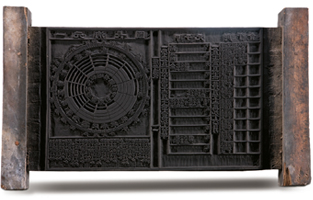
In general, a woodblock has a printing surface where letters or images are engraved and two end pieces which function as handles. The printing surface is divided into a center area for the text body and a tail and foot where footnotes are engraved.
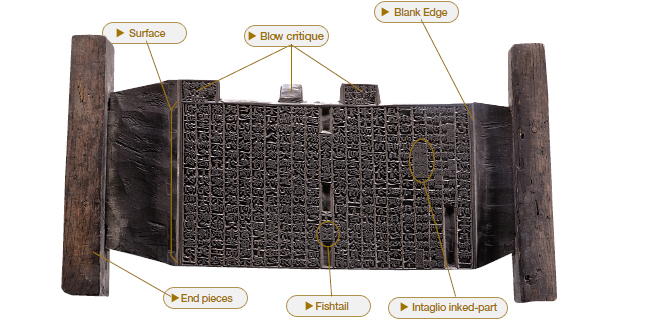
Synopsis of Zhu Xi’s Letters Above is a book made by printing with woodblocks. As the printed contents are folded by the title center, a page in a woodblock is printed as two pages in a book.

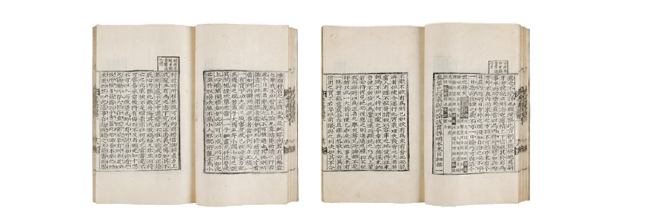
1. Surface
The surface refers to the part engraved with the book’s text. Generally, it is connected with the end pieces in a linear figure, or is linked with the end pieces in a diagonal line near the blank edge of the page.
Linear figures were used before diagonal figures and are often found in Buddhist texts, as well as in Confucian texts printed prior to the 18th century. Meanwhile, Confucian texts produced after the 18th century usually employed diagonal figures.
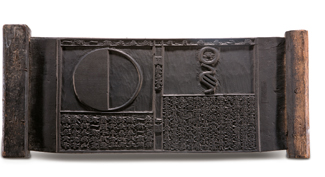
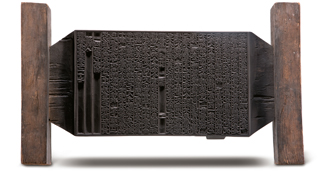
The central printing surface had 10 lines of 18 to 20 engraved characters, and the woodblocks were engraved on both front and back.
2. End pieces (Maguri)
The end pieces refer to the wood pieces attached to both ends of a woodblock which function as handles. When storing woodblocks, the surface can be damaged upon direct contact with another one; the end pieces prevent this. They also facilitate ventilation between the woodblocks and help prevent warping. Furthermore, the title, volume and page can be recorded with an ink stick on the surface of the end pieces to catalog printing woodblocks on a shelf. There are two steps to attaching end pieces to a woodblock. First, a groove is cut the length of the end piece, and the edge of the woodblock is inserted into this groove. To secure a better fastening, a nail made of bamboo or cast iron, or a wooden wedge is inserted in the crack between the woodblock and the end pieces. Besides protecting the surface of the woodblock, the end pieces often provide valuable information such as the name of the engraver or comments on corrections which are not found on the woodblocks themselves or in the printed edition. These often provide new information to researchers.
3. Blank Edge
The blank edge refers to the peripheral border of the printing surface (equivalent to a margin), also called the “byeollan”. When the four margins are delineated by a single line, it is referred to as “four borders with a single line.” When the four margins are delineated by two lines, it is referred to as “four borders with a double line.” When the top and bottom margins are delineated with a single line and the left and right margins are delineated with double lines, it is called “left and right borders with double lines (or top and bottom borders with single line).”
4. Woodblock center
This is the center of the woodblock surface, also called the “pan-gu.” When the engraved content is printed and bound together as a book, the center works as a half border to distinguish the front and back of a page. A woodblock center contains information such as the title of the center, table of contents of each volume, number of pages, fishtail-like pattern, etc.
5. Book title, table of contents of each volume and number of pages
These refer to the title of a book, volume number and the number of pages engraved in the woodblock center.
6. Fishtail
A fishtail-like pattern decorates the upper and lower areas of the woodblock center where the title, table of contents and number of pages are engraved. Its name originates from its appearance, which resembles a fishtail. Its purpose is to align the pages during printing. Double fishtails engraved in the upper and lower areas of the woodblock’s center are most commonly used, but a single fishtail is used from time to time. Fishtails are divided into three categories: white fishtail, black fishtail and flower-pattern fishtail. The flower-patter fishtail is further subdivided into one-leaf, two-leaf and three-leaf patterns according to the number of flower patterns in it. The number of flower patterns is revealed when the printed page is folded in half. When a funnel-like pattern appears on opposite sides facing outward, it is called “inbound”. When the lower fishtail faces outward, it is called “outbound”. The shapes of the fishtail can indicate the time of manufacture, and thus, offer important clues for researchers. Generally, inbound fishtails with a two-leaf pattern are most common. There are some interesting cases where peculiar fishtails with a face-like figure or a flower-figure have been found.
Changes of title of center in picture 1
1 Types without the title of center found in Gwonja and Jeolcheop editions during the Goryeo Dynasty.
2 Only the title of center and table of contents were recorded without blank edgeson the left and right side, which were used from the 13th to early 15th century such as found in Sokbeobyeonhwagyeong.
3 The title of center of Jikji, a metal print. Upper and lower blank edges were not employed linking the front and back of the title center.
4~6 Frequently found in the mid-13th century. Found in the Sung blocks of the late 12th century in China.
7~9 A type frequently found in the 13th and 14th centuries. These were also found in the reprinted edition of the Sung and Yuan blocks.
10 A type in which the thin black mouths are inserted into the lower and the upper sides of a woodblock center.
Found occasionally from the reprinted version of the Sung blocks.
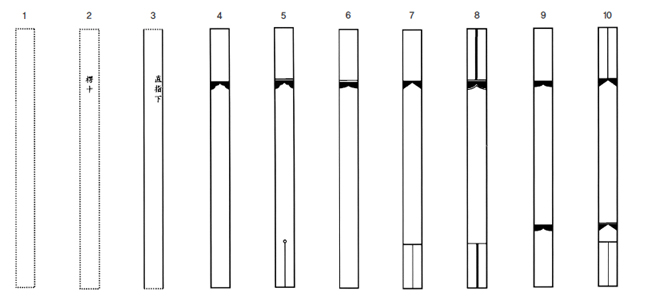
Changes of title of center in picture 2
11~13 Printings of the 14th century which show thin black mouths in the small black fishtails in the upper and the lower parts.
14~16 Types shown in the woodblock-printed edition in the late Goryeo Dynasty and the Gyemija edition made with metal type in the 15th century.
17~19 A pattern during the King Sejong era in the 15th century, shown in the Gyeongjaja edition and Gabinja editions engraved with metal types as well as in the woodprinting edition. This pattern was commonly used as a representative pattern for distinguishing the printing style before the Japanese Invasion into Korea in 1592.
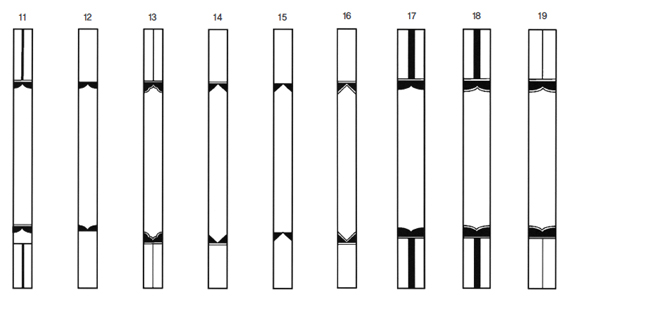
Changes of title of center in picture 3
20~24 Reprinted version of the Yuan blocks shown during the era of King Sejong and Munjong.
25~28 A pattern shown in the Chojugabinja and Byeongjinja editions during the King Sejong era as well as in the Eulhaeja and Eulyuja editions during the King Sejo era, which lasted to the end of the 15th century.
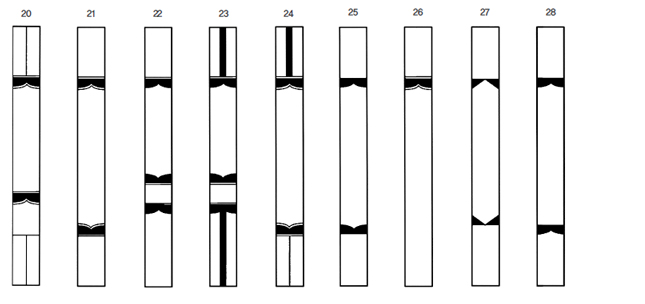
Changes of title of center in picture 4
29~30 A pattern widely used from the King Seongjong era to the King Seonjo era. Three small flower leaves appear symmetrically in the fishtails, and the size is about onethird of the posterior fishtails.
31~32 A popular pattern from the King Seonjo to Gwanghaegun era, which were employed in Jaejugabinja or Samjugabinja. Compared to the later era, the black fishtails were a bit larger and three flower leaves were deployed symmetrically.
33~34 Three flower leaves were arranged irregularly in a large black fishtail, and an abstract form appeared occasionally thus making it hard to give a name for the specific form. Widely distributed in wooden types, Hullyeondogamja and Gyoseogwanhwalja.
35~36 Appeared mainly in the fishtails of woodblocks, and occasionally showed an irregular from. Shown in the Hyeonjongsillokja edition.
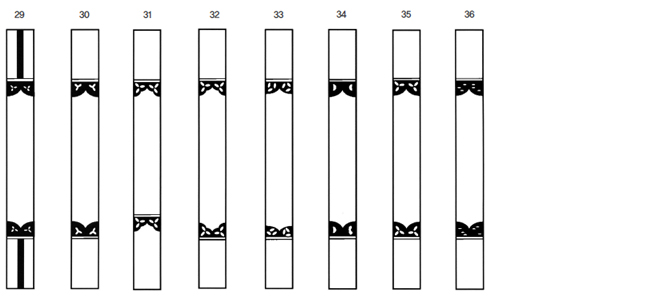
Changes of title of center in picture 5
37~39 hown in the Woongakinseocheja edition, which was made referring to the “Gangheejajeon style” of China, during the era from the King Sukjong to the King Yeongjo. Shown frequently in the collection of works during the late Joseon Dynasty.
40~41, 43 The pattern observed most from the era of King Yeongjo to the Korean Empire. Four symmetric flower leaves were deployed in the upper or lower fishtails.
42 A retro pattern shown in Chwijinja, which imitated a Chinese pattern during the King Sunjo era.
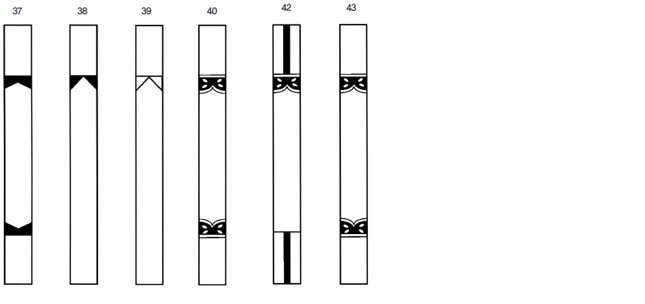
7. Page-brow
This is a blank space over the edge blank (margin), also called a “page-head” or “sky-head.” When a note is engraved here, it is called a “head-note.” If the head note is a critique on the content of the text, it is called a “brow critique.”
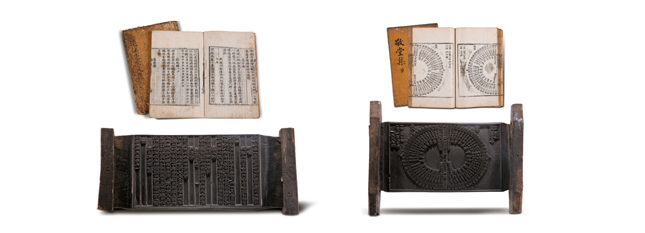
8. Page-foot
This refers to a blank space under the edge blank (margin), also called a “page-leg” or “ground-leg”. A note engravedhere is called a “foot-note.”
 istoric Park
istoric Park9. Boundary line
This delineates each line in the body of the text, also referred to as a “rule mark” or “boundary mark.”
10. Line-number
This refers to the number of lines and characters engraved in a block. When a printed page is folded in half lengthwise, each side usually has 10 lines with 18 to 20 characters per line.
11. Black-mouth, white-mouth, and flower-mouth
An intaglio inked-part is where special notations are engraved, such as the title of the book or name of the exegete. The intaglio part visually stands out as it contrasts with the body of the text engraved in bas relief.
12. Intaglio inked-part
An intaglio inked-part is where special notations are engraved, such as the title of the book or name of the exegete. The intaglio part visually stands out as it contrasts with the body of the text engraved in bas relief.
13. Ink blank
This refers to a blank space for an omitted sentence where nothing is engraved. This space was to be engraved at a later date when the omitted sentence was revised and added.
14. Inlay
This is also called “fossil-wood” or “bogwood.” When a character was engraved incorrectly or there was an error in content, the erroneous character was dug out and replaced with new characters of the same size. Using inlaid characters, some families living in different places modified the publication information and published new versions with different dates and places of publication. This sometimes gave the impression it was a different text, although, in actuality, it was a reprint of the original. Occasionally, the inlaid characters are missing, but in such cases, the character may have been removed to make moveable wood type.
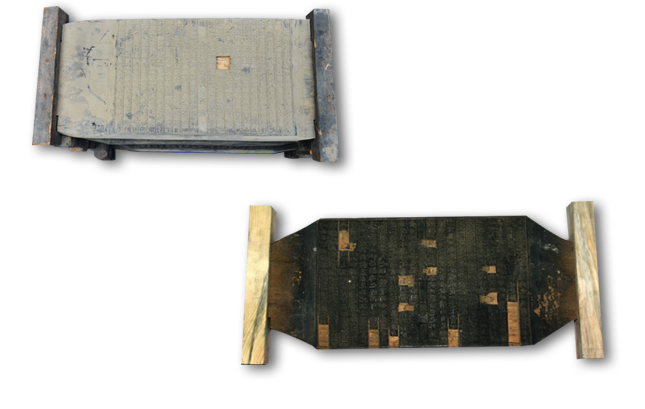
a woodblock to make wooden types

